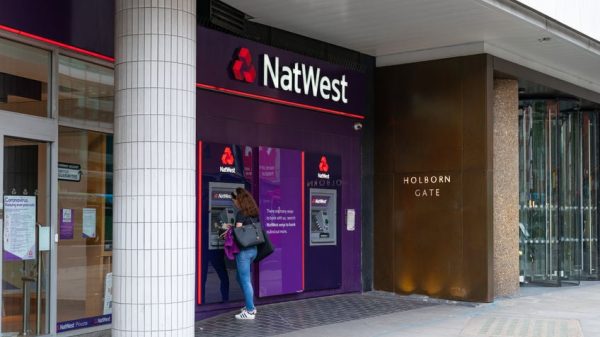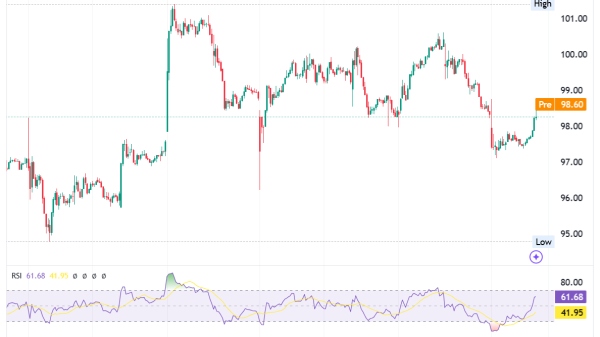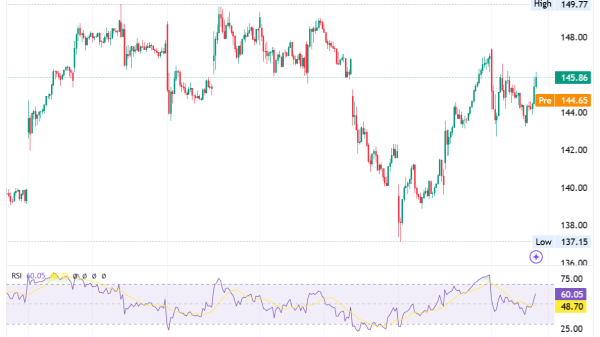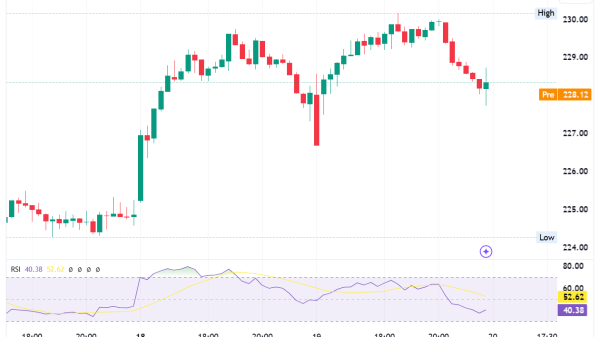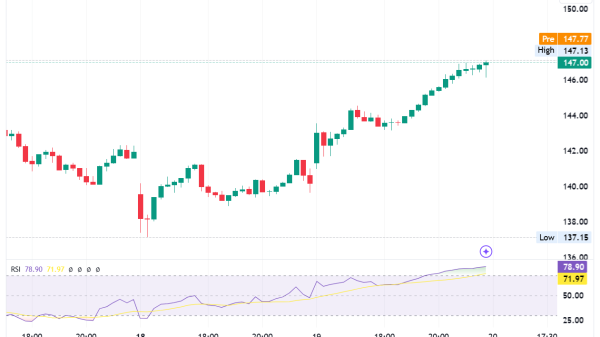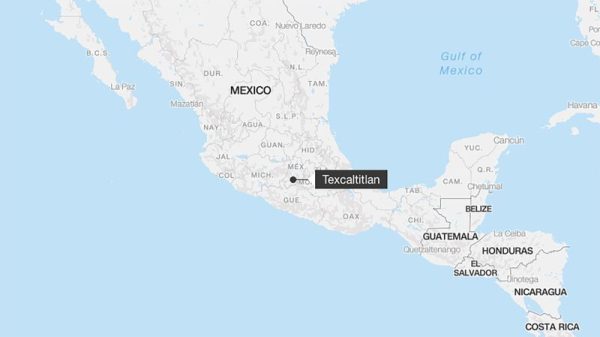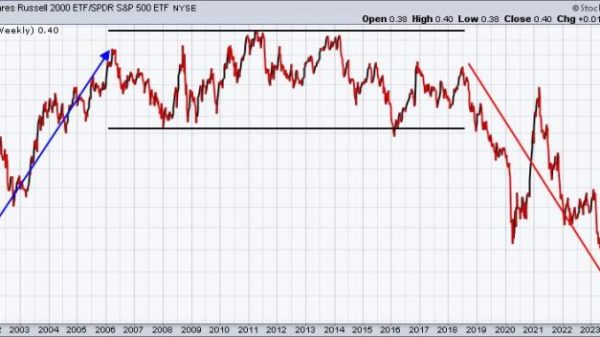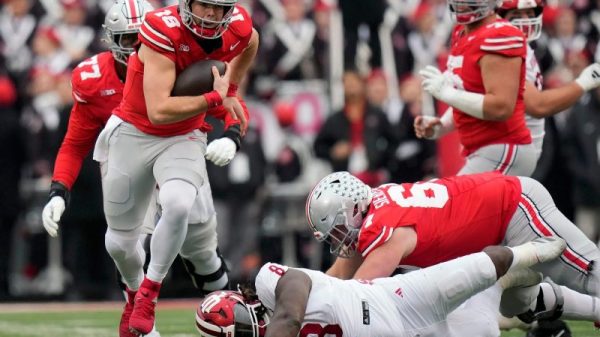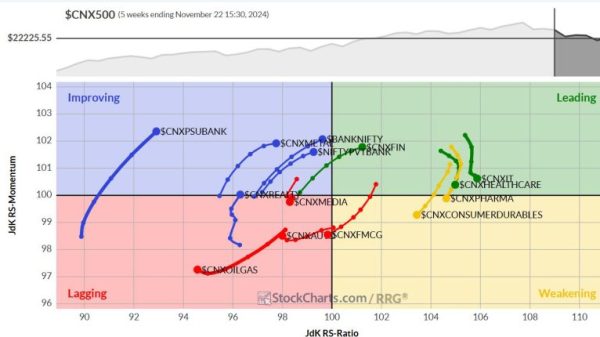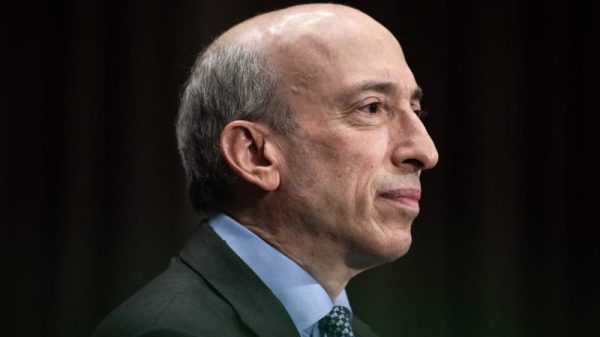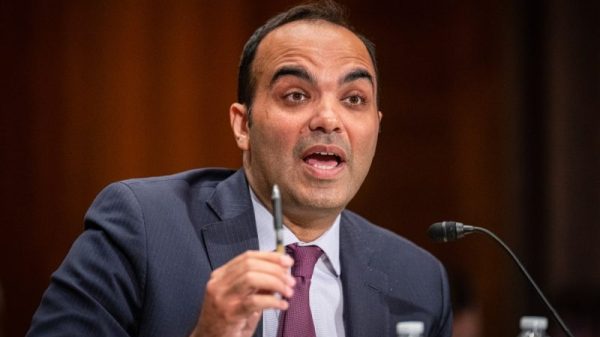
Glacier Bancorp (NYSE:GBCI) has experienced a notable uptick in its third-quarter performance, as CEO Randy Chesler highlighted the continuation of strong organic growth trends and the successful acquisition of six Montana branches from Heartland Financial. With a 15% increase in earnings per share and a 14% rise in net income compared to the previous quarter, the bank’s financial health appears robust. The loan portfolio expanded significantly, and the company also saw a healthy increase in core deposits and non-interest income.
Key Takeaways
- Glacier Bancorp’s Q3 earnings per share increased by 15% to $0.45.
- Net income for the quarter reached $51 million, marking a 14% rise from Q2.
- The acquisition of six Montana branches added $403 million in assets.
- The loan portfolio grew to $17.1 billion, while core deposits rose to $20.7 billion.
- Non-interest income and expenses both saw an 8% and 3% increase, respectively.
- The company projects to maintain core non-interest expenses between $143 million and $145 million for Q4.
- Two additional acquisitions are planned, which will total approximately $1.2 billion in assets.
Company Outlook
- Glacier Bancorp aims to close and convert two acquisitions in 2024, adding around $1.2 billion in assets.
- Management maintains a stable yet cautious outlook for the remainder of the year.
- The fourth quarter is expected to be slower due to typical agricultural pay-downs.
- Glacier Bancorp is exploring growth opportunities through both organic means and M&A in eight fast-growing states.
Bearish Highlights
- Despite strong loan yields, organic growth has been lighter due to weaker demand and increased payoffs from construction projects.
- The fourth quarter may experience a slowdown in activity.
Bullish Highlights
- Loan yields remain robust, with new loans producing mid to upper-7% rates.
- Cash flows from the securities portfolio are projected at $250 million per quarter.
- Approximately 7% of the loan portfolio is indexed to prime, with expectations for increased loan yields due to re-pricing dynamics.
Misses
- Significant deal flow has not yet materialized, despite pent-up demand in the pipeline.
Q&A Highlights
- There are no specific concerns regarding asset quality across industry sectors or geographies.
- Challenges are primarily in management, particularly related to an agriculture relationship, which is planned to be addressed in the coming quarters.
- Loan yields have increased by 12 basis points to 5.61%, with about 20% of the loan portfolio expected to re-price annually.
Glacier Bancorp’s third-quarter earnings call painted a picture of a financial institution on the rise, with strategic acquisitions and strong organic growth contributing to its positive trajectory. The company’s management team expressed a cautiously optimistic outlook for the near future, with plans to enhance market presence and scale through further acquisitions and organic growth. Despite some challenges, such as lighter organic growth and a potential slowdown in the fourth quarter, the bank’s financial metrics, including loan yields and net income, reflect a solid performance. Investors and market observers will be watching closely as Glacier Bancorp navigates the remainder of the year and moves forward with its expansion plans.
InvestingPro Insights
Glacier Bancorp’s (GBCI) recent performance aligns with several key metrics and insights from InvestingPro. The company’s strong Q3 results and positive outlook are reflected in its market performance, with InvestingPro data showing a significant 67.32% price total return over the past year and a 29.73% return over the last six months. This upward trend has positioned GBCI near its 52-week high, trading at 98.96% of that peak.
The bank’s focus on growth through acquisitions and organic means is particularly noteworthy given its current valuation. InvestingPro data indicates that GBCI is trading at a high earnings multiple, with a P/E ratio of 29.93. This valuation suggests that investors are pricing in expectations for continued growth and strong performance.
However, investors should be aware of potential challenges. An InvestingPro Tip highlights that 6 analysts have revised their earnings downwards for the upcoming period, which could be related to the management’s cautious outlook for Q4 and the expected slowdown in activity. Additionally, another tip points out that net income is expected to drop this year, which contrasts with the recent quarterly improvements but may reflect longer-term projections.
On a positive note, Glacier Bancorp has maintained dividend payments for 40 consecutive years, as noted by an InvestingPro Tip. This long-standing commitment to shareholder returns aligns with the company’s current dividend yield of 2.77%, which may appeal to income-focused investors.
For those interested in a deeper analysis, InvestingPro offers 10 additional tips for GBCI, providing a more comprehensive view of the company’s financial health and market position.
Full transcript – Glacier Bancorp Inc (GBCI) Q3 2024:
Operator: Good day and thank you for standing by. Welcome to the Glacier Bancorp Third Quarter Earnings Conference Call. [Operator Instructions] Please be advised that today’s conference is being recorded. I would now like to hand the conference over to your speaker today, Randy Chesler, Glacier Bancorp President and CEO. Please go ahead.
Randy Chesler: Good morning and thank you for joining us today. With me here in Kalispell is Ron Copher, our Chief Financial Officer; Byron Pollan, our Treasurer; Tom Dolan, our Chief Credit Administrator; Don Chery, our Chief Administrative Officer and joining us on the phone is Angela Dose, our Chief Accounting Officer. I’d like to point out that the discussion today is subject to the same forward-looking considerations outlined starting on Page 13 of our press release, and we encourage you to review this section. The positive organic trends that emerged in our first and second quarters continued and became more pronounced through our third quarter. In addition, in the third quarter, we finalized the purchase of 6 Montana branches from Heartland Financial of its Rocky Mountain Bank division, including the deposits, loans, owned real estate and fixed assets associated with the branches totaling $403 million in assets. We closed this transaction on July 19 and converted these branches to Glacier systems over that weekend. This quarter, we had strong EPS growth of 15% or $0.45, primarily driven by increasing interest income and higher non-interest income. Net income was $51 million, which increased $6.3 million or 14% from the prior quarter net income of $44.7 million. Net interest margin grew 15 basis points from 2.68% to 2.83%. Net interest income was $180 million for the current quarter, an increase of $13.8 million or 8% from the prior quarter net interest income. The loan portfolio of $17.1 billion increased $329 million or 2% during the current quarter and organically increased $57.6 million or 1% annualized during the current quarter. The loan yield of 5.69% in the current quarter increased 11 basis points from the prior quarter loan yield of 5.58%. Total core deposits of $20.7 billion increased $613 million or 3% during the current quarter and organically increased $216 million or 4% annualized during the current quarter. Non-interest-bearing deposits of $6.4 billion increased $314 million or 5% during the current quarter and organically increased $221 million or 14% annualized during the current quarter. Our total cost of funding in the quarter, including non-interest-bearing deposits, decreased 1 basis point from the prior quarter to a total cost of funding of 179 basis points. Core deposit costs, including non-interest-bearing deposits, was 1.37% for the current quarter compared to 1.36% in the prior quarter. Total non-interest expense of $145 million was within our expected range, increasing $3.8 million in the quarter or 3% over the prior quarter. While nonperforming assets to bank assets and net charge-offs to average loans and early stage delinquencies increased slightly our credit portfolio continues to perform at near record levels with no material negative trends emerging. The current quarter credit loss of $8 million included $3.6 million of provision for credit losses from the acquisition of Rocky Mountain Bank. Excluding the acquisition of Rocky Mountain Bank the current quarter credit loss expense was $4.4 million, including $4.2 million of credit loss expense from loans and $225,000 of credit loss expense from unfunded loan commitments. Non-interest income for the current quarter totaled $34.7 million, which was an increase of $2.5 million or 8% over the prior quarter. Tangible stockholders’ equity of $2.1 billion increased $68.1 million or 3% compared to the prior quarter and was primarily the result of a decrease an unrealized loss on the available-for-sale debt securities, which was partially offset by the increase in goodwill and core deposit intangibles associated with the Rocky Mountain Bank acquisition. We also declared a quarterly dividend of $0.33 per share. The company has declared 158 consecutive quarterly dividends and has increased the dividend 49x. The Glacier team has done an excellent job taking care of our customers while growing the business organically and welcoming our new acquisitions. In 2024, we closed then converted two acquisitions during the year, totaling approximately $1.2 billion in assets. So that ends my formal remarks, and I would now like to ask the operator to open the line for any questions that our analysts may have.
Operator: [Operator Instructions] Our first question will come from the line of Jeff Rulis from D.A. Davidson. Your line is open.
Jeff Rulis: Thanks. Good morning.
Byron Pollan: Good morning, Jeff.
Jeff Rulis: I wanted to touch on the non-interest-bearing growth on the organic side. I think a real outlier and most simply looking to hold that balance, not show double-digit annualized growth. I guess what occurred in the quarter with the non-interest-bearing growth?
Byron Pollan: Yes, Jeff, this is Byron. Yes, we were really pleased to see that organic growth in the third quarter. Third quarter is typically a time when we see seasonal strength in our deposit base and particularly in non-interest-bearing. And that’s what we saw this quarter. And our divisions really did deliver on that. So that was great to see. We are continuing to see a little bit of migration to interest-bearing accounts that is still there, but it’s not nearly at the level that we were seeing, say, a year ago. In terms of our outlook for the fourth quarter for non-interest-bearing, I do think that we could be flat to down a little. We could see a little bit of unwind of that seasonal inflow that just came in.
Jeff Rulis: Okay. And Byron the timing of maybe – the timing of that non-interest-bearing build in the quarter and, additionally, the timing of bringing borrowings down. My guess is, and I’m ultimately giving you a question here. The impact on deposit cost. Maybe if you have an exit spot deposit cost at the end of the quarter would also be helpful?
Byron Pollan: Sure. In terms of the timing of the non-interest-bearing build throughout the quarter, we saw every month, July, August, September – saw growth on an organic basis in our non-interest-bearing. So it was really spread very nicely throughout the quarter. In terms of the timing of our FHLB pay-down, the overnight portion of our FHLB funding that did happen in July earlier in the quarter. And in terms of a spot rate, our spot rate for total deposits, this is the rate on September 30 was 1.35%. Did I cover all your questions?
Jeff Rulis: Yes, that helped a lot. Thank you. Maybe if I could hop to expenses. I think really at the low end of the guide, and I think it included merger costs. So I guess I’m hesitant to kind of ask about the run rate ahead? It seems like Ron, we beat that number a little bit each quarter. So what should we expect in terms of – I guess you’d have the branches for a full quarter. I think you missed a couple of weeks in the third, but any thoughts on expenses ahead?
Ron Copher: Yes, Jeff. Just to recognize, yes, the divisions really did a stellar job being very focused on controlling expenses and so hats off to them, and that’s what happening. Yes, it’s a pleasant development. So if you do exclude the gain on the sale and the M&A, the core non-interest expense came in at $143.4. And we think that, that can be maintained into the next quarter. And we need to go back and understand what’s really driving that. You’ll see that our compensation is very well controlled, even picking up folks from the Rocky Mountain Bank branch is very controlled. And again, that’s in part, in large measure to our technology. I’ve spoken about in the past, we’ve cut the time and half to open an account. We’ve got closing on each day now instead of a batch submission. It’s real time. The point of all this is that we’re doing things very well, but with less people. The divisions have strongly embraced the technology. So they’re able to do more with less, and that’s been a theme that we started talking about really last year. And so that continues to happen and that will then help understand the guide I will give for core non-interest expense. When I say core, it means reported less gain on sale or losses, it means excluding the M&A. I’m going to lower the guide – we’re going to lower the guide by $2 million on each end. So it will be $143 million to $145 million for Q4.
Jeff Rulis: Thank you. I’ll step back.
Operator: Thank you. [Operator Instructions] Our next question will come from the line of Kelly Motta from KBW. Your line is open.
Kelly Motta: Good morning. Can you show the question? Maybe piggy backing off that expense question, again, it’s compared really favorably to where you’ve been guiding now for a couple of quarters, I think. Just as we look ahead, I know you may not be ready to look at 2025 yet with where you are in the budget process. But as we think about the natural kind of expense growth rate of your company, what’s that good – what – with a good run rate for growing expenses just on a normalized basis. And it seems like most of the room and fat has been cut given what you’ve done, but any additional thoughts there?
Byron Pollan: Yes. Kelly, appreciate the question. I would go with 3%. That’s slightly better than what we’ve had on average this year than last year. And in part, that’s the efficiency gains we’re getting there. We’re still having – using third-party consultants to help build out our control functions. And in large measure, when I say control functions, that reflects the heightened continuing regulatory expectations. And so we want to make sure as we grow that we’re staying on top of that, staying ahead of it. But coming back to the answer is 3%.
Kelly Motta: Got it. That’s helpful. And then maybe turning to loan growth. You’ve been ex the deals you’ve done this year, you’re running in the low single-digit range. Just wondering if you’ve seen any pent-up demand ahead of rate cuts and how to think through that? As well as where you’re seeing opportunities in the state of the pipeline as it stands today?
Tom Dolan: Yes. Kelly, this is Tom. We’re seeing continued optimism from our customers especially after the recent rate reduction. But we have yet to see it translate to significant deal flow. To answer your question on the pipeline, it was fairly stable throughout the third quarter. But I think there’s still a little bit of uncertainty that’s keeping that pent-up demand on the sidelines tell there’s a little bit more clarity over the next quarter. So for the rest of the year, I think you’re probably going to see more of the same. Fourth quarter is typically a little slower growth quarter for anyway, particularly due to the agriculture pay-downs. So like I said in the fourth quarter, I think we’ll probably see a little bit more of the same.
Kelly Motta: I got it. That’s helpful. I’ll step back. Thank you.
Operator: [Operator Instructions] Our next question will come from the line of Matthew Clark from Piper Sandler. Your line is open. Matthew, you maybe online. Your line is open. We’ll move on to our next question. One moment. Our next question will come from the line of David Feaster from Raymond James. Your line is open.
David Feaster: Hi, good morning, everybody.
Tom Dolan: Good morning, David.
David Feaster: Maybe touching on the growth side. I mean, organic growth was a bit lighter. I’m curious maybe some of the drivers behind that. I mean how much of that’s a function of weaker demand or higher payoffs and pay downs? Just curious kind of how the pipeline is shaping up, what you’re hearing from clients and where you’re seeing opportunity to drive growth and just kind of how you think about the pace of organic loan growth, going forward?
Tom Dolan: Yes, David, this is Tom. Yes, there’s still some pent-up demand. There’s continued optimism. But pipelines were relatively stable throughout the quarter. So the answer to your question on the drivers behind the growth, it was a little bit of both. There’s not quite the strength of demand that we would normally see. And in addition to that, we’ve seen elevated payoffs, as some of these construction and development projects either sell out or hit stabilization in either the asset is sold or is refinanced into the secondary market. So, we are continuing to see that as well. And that’s another reason why you have seen the construction balances come down for another quarter. Those things move into either the term portfolio or are sold and the volume is just not replacing the outflow.
David Feaster: Okay. And then maybe touching on some of the re-pricing and remixing dynamics within the earning asset base, I am curious, how do you think about cash flows from the securities book and the roll-off rates there? And similarly, with the upcoming maturities in the loan portfolio, where new loan yields are relative to roll-off rates? And just – how do you think about the re-pricing dynamics there in the near-term and just the opportunity to continue to remix the earning asset base?
Randy Chesler: Well, let’s – so let’s take the first part of that, new loan piece and what your thoughts are on that. And then maybe, Byron, we can move on to the investment portfolio and cash flows.
Tom Dolan: Yes. So, the loan yields, we are still seeing mid to upper-7 in our top line production. So, as a relation to the coming off yield, I will pass it on to Byron.
Byron Pollan: Sure. We continue to see strong cash flow off of our securities portfolio. $250 million a quarter for the next couple of quarters, I think remains a good guide. That cash flow includes principal and interest. The yield of that cash flow is coming off that, it’s about 1.5%. And so as we move that and remix that into the loan portfolio yields that Tom just mentioned, that re-pricing lift creates a lot of momentum for us. I will say we do start to see some additional securities maturity in 2025. And so in the second quarter, we have – we start to see some treasury bonds come back to us. We have $50 million in the second quarter of 2025. And then in the fourth quarter of 2025, we have $270 million mature. So, we have been running at a pretty consistent $250 million pace. Look for that to begin to increase next year.
David Feaster: Okay. And then maybe just kind of thinking high level, how do you think about your footprint, right? I mean you have got a really broad network, in footprint and some massive density in some key markets, but maybe smaller footprints in some of the other markets. I am curious how you think about expansion priorities, where you are focused on driving growth and how do you think about organic growth relative to supplementing that with M&A and just so kind of how some of those conversations are going?
Randy Chesler: Yes. So, I think the outlook is very, very good. The eight states we are in are some of the fastest-growing states in the United States in terms of GDP growth, so very encouraged by that. In terms – it’s really both strategies, Dave. So, we have an organic strategy with each division where they are looking at their markets and expanding as they see opportunities. And across the 17 divisions that takes place at quite a few of them. At the same time, we are looking at M&A opportunities to fill in and grow scale in a lot of these fast growth markets. And so as we talk to people and look at opportunities, those are the things that we see. And more and more, we see opportunities to add on to existing divisions and build scale with some of the things that we are looking at. So, really both Dave, it’s both organic. We don’t wait for an acquisition to appear, but there is markets we think are good markets to go into, we will go into them organically. And then an acquisition that might be available to us, we look at as just building scale in the markets that we are in today.
David Feaster: Are there any of your markets where you see the most opportunity at this point or where you would like to drive more density in, or is there opportunity for market expansion that maybe looks attractive to you at this point?
Randy Chesler: Yes. They are – across the eight states, they all have areas that we would be interested in growing through acquisition. So, I can’t say there is one that that we would put at the top. And I think that’s one of the strengths that we have is we have multiple options across those eight states. And so we are not really pinned down waiting for something in one particular area, keep our options open, look across those eight states and where the good opportunities occur, that’s where you will see us go.
David Feaster: Got it. Alright. Thanks everybody.
Operator: [Operator Instructions] Our next question will come from the line of Jeff Rulis from D.A. Davidson. Your line is open.
Jeff Rulis: Thanks. Just had one other and I know we are splitting hairs on the credit side, but just wanted to kind of check in on the small increase and it’s a fraction appears, but just on the – it looked like some ag and four to four family and Randy, I think in your opening comments, didn’t sound anything systemic and at these low levels, we are going to see it bumping around. But anything to speak on and what you saw in terms of the quarter?
Tom Dolan: Yes. Jeff, I appreciate the context around the change. But very appreciated. But just as Randy said, there has been no specific industry asset class or geography that’s shown from any level of that our size is. I think what we are seeing that is just continued signs of normalization in overall asset quality. We are obviously coming off of a very strong position of asset quality. So, it doesn’t take much to move the needle. And given the particulars, you mentioned agriculture. That was basically kind of one relationship that we have been working with for some time now. The challenge there is more on the management side, not market. So, we will be looking to do that over the next couple of quarters. Outside of that, there is nothing of particular concern. It’s pretty well spread out.
Jeff Rulis: Okay. Thank you, Tom.
Operator: Thank you. I am not showing any further questions in the queue. I would now like to turn it back over to Randy for any closing remarks.
Randy Chesler: Great. Well, thank you very much for dialing in today…
Operator: We do have one question. Do you want to take it?
Randy Chesler: Sure. Absolutely.
Operator: One moment. Our next question comes from the line of Matthew Clark from Piper Sandler. Your line is open.
Randy Chesler: Hi Matthew.
Matthew Clark: Hey. How are you? Sorry about that. I thought I was in the queue, yes I wasn’t. First question is just on the core loan yields. I think they were up, excluding accretion by 12 bps to 5.61. Can you just remind us how much of your loan book is truly floating? And then assuming we get some additional rate cuts here in the fourth quarter and into next year, what are your thoughts on just the trend in loan yields with the benefit of the back book and – but also the pressure on floating?
Byron Pollan: Yes, this is Byron. I appreciate the question. In terms of floating, truly floating, about 7% of our loan portfolio is indexed to prime. We really don’t have much indexes, so first of that is the floating component of our loan portfolio. Trend into next year, as you mentioned, the back book and the re-pricing of that is that it’s going to be a very powerful dynamic for us. And so I think I would continue to expect our loan yield to increase as that re-pricing happens. About 20% of our loan portfolio will re-price in any given year. And we do expect some lift in that re-pricing at rates where they are and at rates where we see the market expectations are going. So, we do see continuing it.
Matthew Clark: Great. And then just the average margin in the month of September, if you have it, either core or reported?
Byron Pollan: Sure. Our margin in the month of September was $288 million.
Matthew Clark: Got it. Okay. Great. Thank you.
Randy Chesler: You’re welcome.
Operator: Thank you. Now we don’t have any further questions. Randy, over to you.
Randy Chesler: Alright, Victor. I appreciate it. And thank you everybody for dialing in. Appreciate the interest. And I want to wish everybody a great rest of the day, Friday and weekend as well. Thanks for joining us this morning.
Operator: Thank you for your participation in today’s conference. This does conclude the program. You may now disconnect. Everyone, have a great day.
This article was generated with the support of AI and reviewed by an editor. For more information see our T&C.



